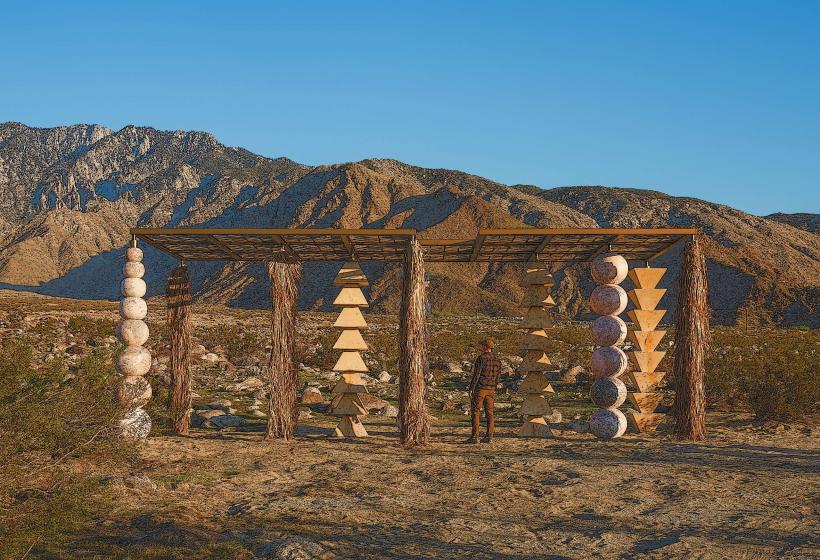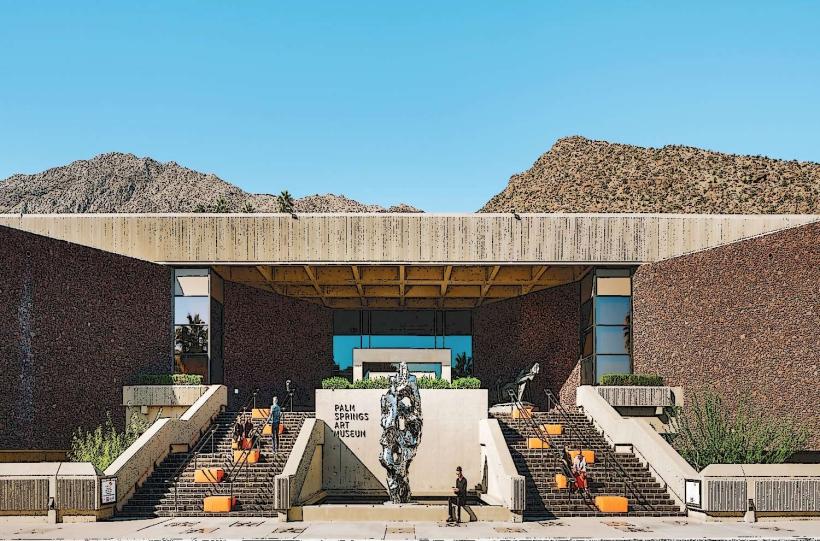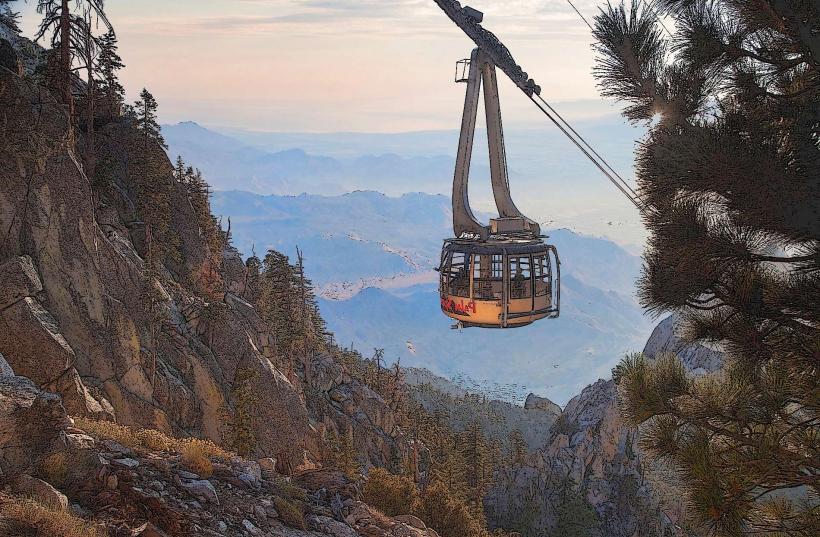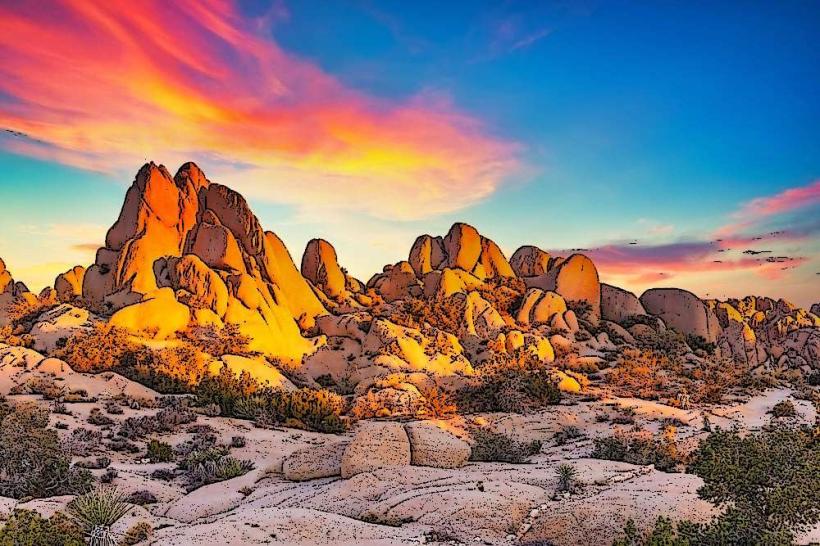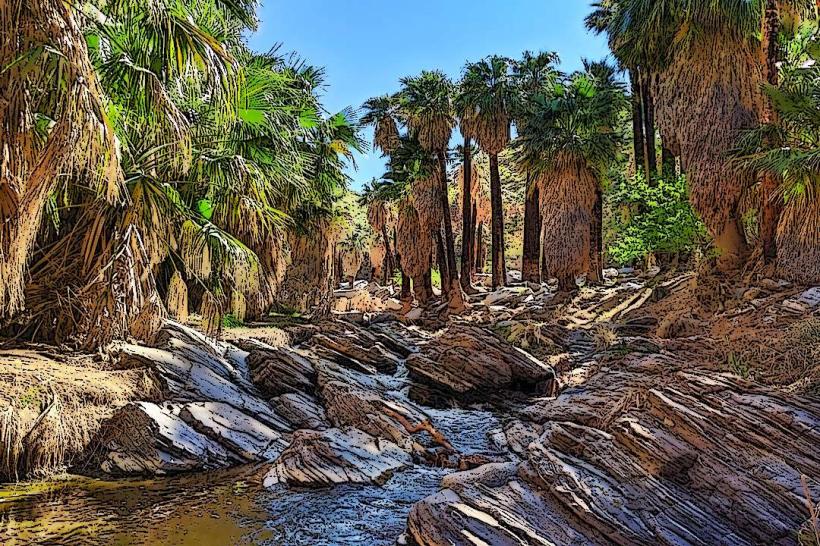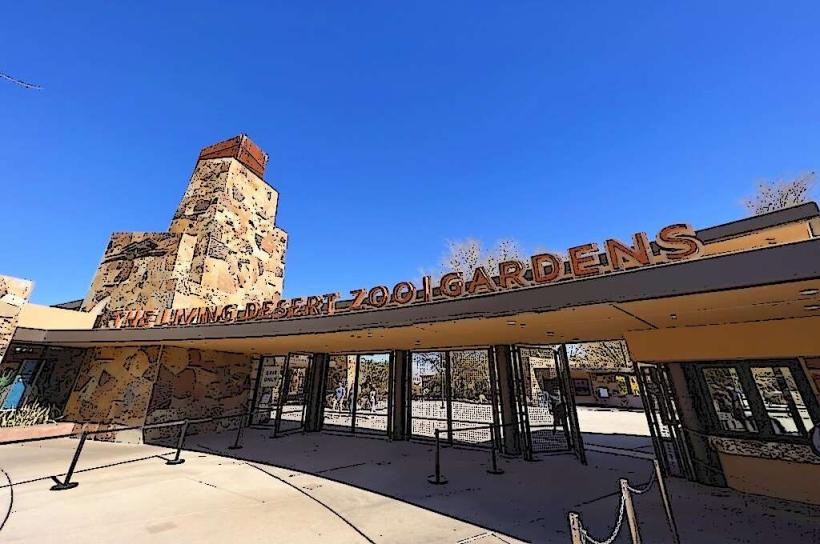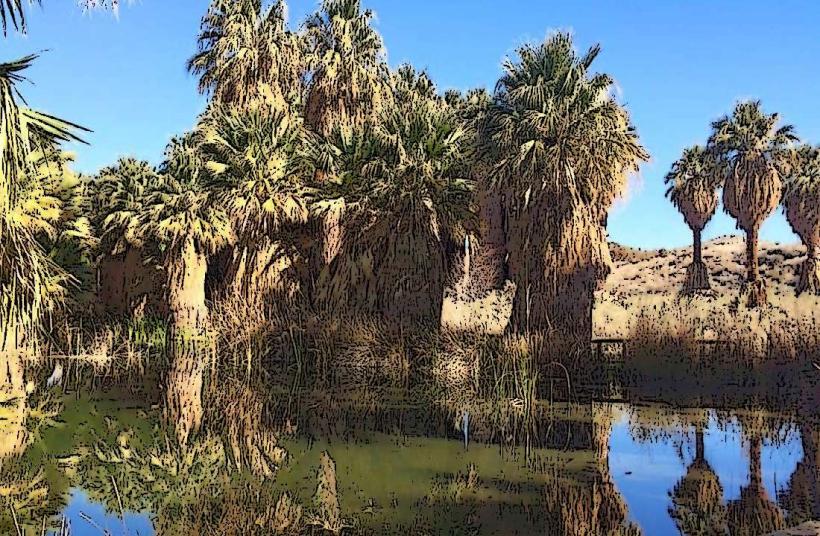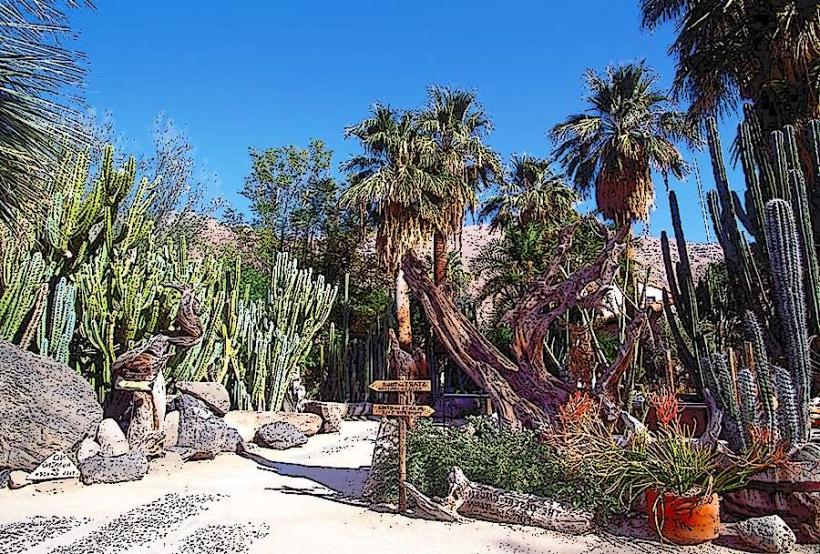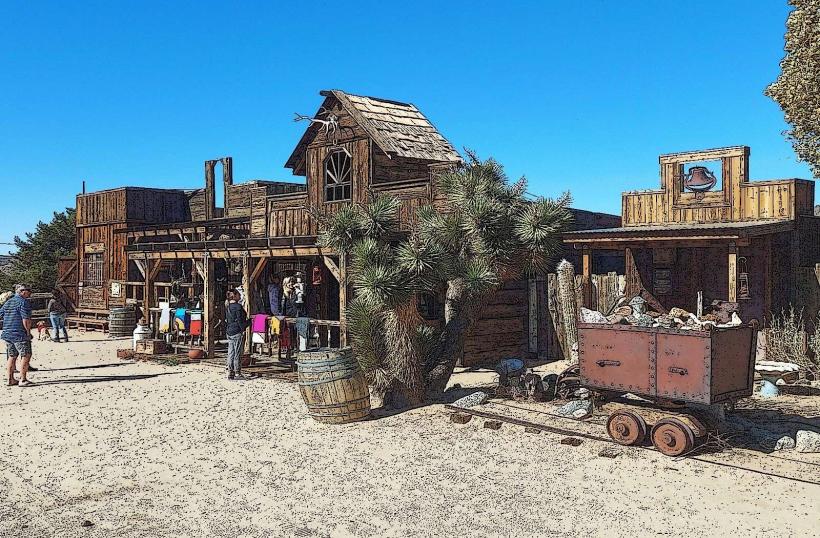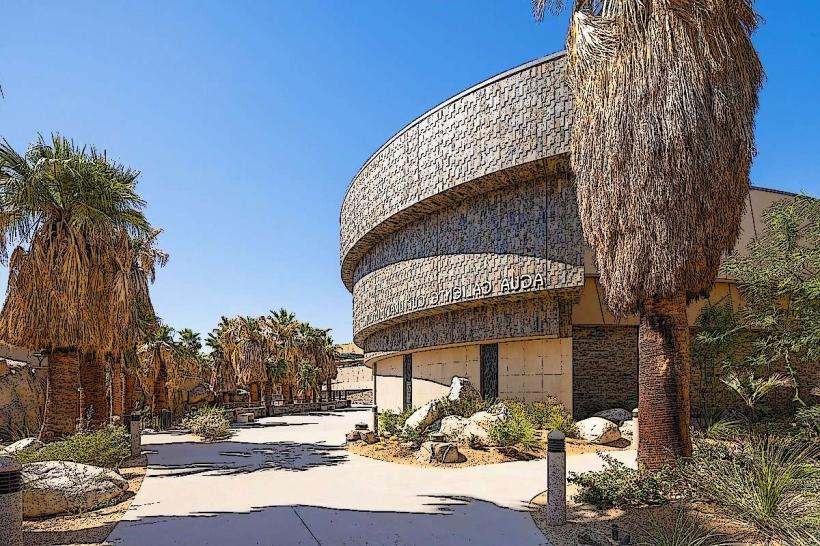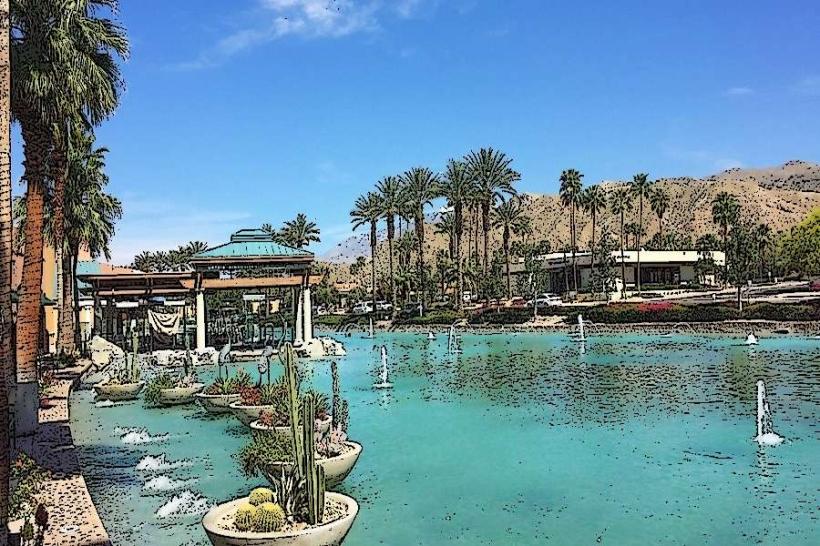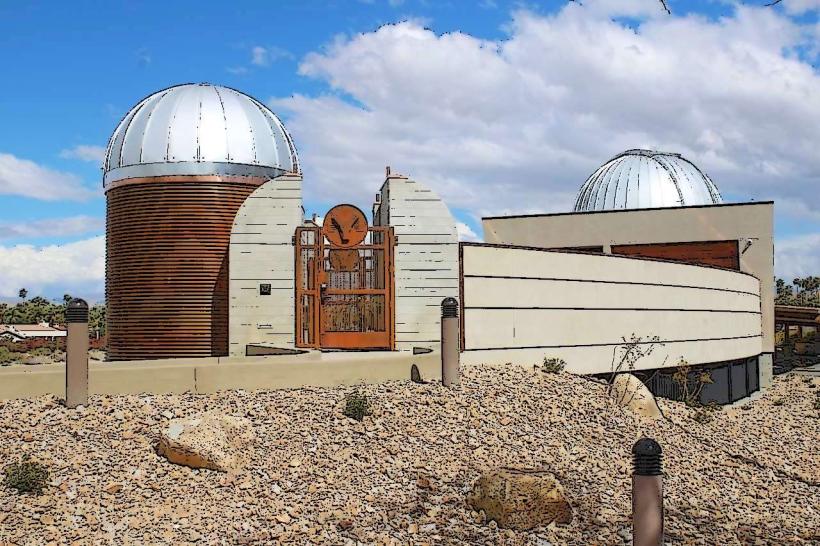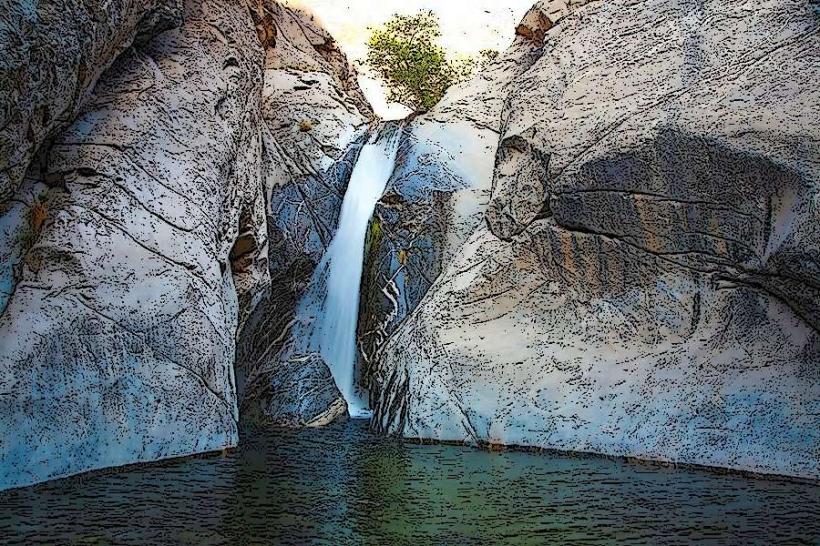Information
Landmark: San Jacinto MountainCity: Palm Springs
Country: USA California
Continent: North America
San Jacinto Mountain, Palm Springs, USA California, North America
The San Jacinto Mountains are one of the most prominent mountain ranges in Southern California, offering visitors breathtaking views, diverse ecosystems, and abundant recreational opportunities. Located in Riverside County, the range forms part of the larger Peninsular Ranges, separating the desert to the east (Coachella Valley) from the San Bernardino Mountains to the west.
Geography and Geology
Highest Peak: The highest point in the San Jacinto Mountains is San Jacinto Peak, which rises to 10,834 feet (3,302 meters). It is the second-highest mountain in Southern California, after Mount San Gorgonio. The peak is known for its steep escarpment, where the elevation increases sharply in a very short distance, creating dramatic views from both the desert floor and the mountain top.
Geological Significance: The mountains are primarily composed of granite rocks and are shaped by tectonic activity. The San Jacinto Fault and San Andreas Fault are the major fault systems in the region, contributing to the mountain range’s steep cliffs and geological instability. The area is geologically active, which makes it significant for both scientific research and adventure seekers. The San Jacinto Mountains are part of a larger region characterized by fault-block mountains, formed through movement along these fault lines.
Flora and Fauna
The San Jacinto Mountains host a variety of plant and animal life, making them a biological hotspot. The ecological zones of the mountains range from desert to forest, changing as the elevation increases.
Lower Elevations: At the foothills and lower elevations, you’ll find desert-adapted plants like California black oak, Coulter pine, and desert scrub species. These plants are suited for the harsh desert environment but are gradually replaced by more forested species as you ascend.
Mid to High Elevations: As you gain altitude, the vegetation changes to include ponderosa pines, Jeffrey pines, lodgepole pines, and white firs. The higher elevations, especially above 8,000 feet, are dominated by a mix of conifers and mountain meadows.
Giant Sequoias: There is also a grove of approximately 150 non-native giant sequoias planted by the U.S. Forest Service in the 1970s. While not naturally occurring, these majestic trees are a sight to behold and provide a unique feature in the San Jacinto Mountains.
Wildlife: The mountain range is home to a diverse array of wildlife, including the Peninsular bighorn sheep, desert tortoise, southern rubber boa, and Coachella Valley fringe-toed lizard. The mountains are also rich in bird species, making them a great destination for birdwatching. Among the rare plant species that grow in the area are Hidden Lake bluecurls and vanishing buckwheat, both of which are protected due to their rarity.
Recreation and Trails
The San Jacinto Mountains are a popular destination for hiking, mountain climbing, and winter sports. The area offers numerous trails for all skill levels, from easy walks to challenging backcountry routes.
Mount San Jacinto State Park: The state park encompasses more than 54 miles of hiking trails, including parts of the famous Pacific Crest Trail. Popular hikes include:
The Cactus to Clouds Trail, a strenuous route starting in the desert and climbing nearly 10,000 feet to reach the summit of San Jacinto Peak. This hike is known for its extreme elevation gain, some of the most dramatic in North America.
The Skyline Trail, a moderate-to-difficult trail that takes you from the desert floor to the summit with stunning vistas along the way.
The Round Valley Loop, a 2.5-mile loop that provides great views and access to the wilderness.
Palm Springs Aerial Tramway: For those looking for a less physically demanding way to enjoy the San Jacinto Mountains, the Palm Springs Aerial Tramway is an ideal option. The tramway ascends from 2,643 feet in the desert to 8,516 feet at the Mountain Station. It takes approximately 10 minutes to reach the top, offering panoramic views of the desert below and access to several hiking trails at the top. Some popular trails accessed by the tram include:
Desert View Trail: A relatively short, easy trail that provides stunning views of the Coachella Valley.
Round Valley Loop: A moderate trail that circles the valley and provides access to high-altitude ecosystems.
Winter Sports: During winter months, the San Jacinto Mountains receive significant snowfall, transforming them into a winter sports haven. Snowshoeing, cross-country skiing, and sledding are popular activities, with rental equipment available at the Adventure Center located at the top of the tramway.
Nearby Communities
The San Jacinto Mountains are bordered by several towns that make excellent bases for exploration.
Palm Springs: Located at the base of the mountains, Palm Springs is a famous desert resort town with easy access to the Palm Springs Aerial Tramway and a variety of outdoor activities.
Idyllwild: A charming mountain village located further up the mountain, known for its artsy vibe, cozy atmosphere, and proximity to some of the best hiking trails in the region.
Mountain Center and Pinyon Pines: Smaller, more remote communities that offer access to the wilderness areas and serene mountain views.
Visitor Information and Tips
Permits: For certain activities, such as hiking beyond the ranger station or camping in the wilderness, permits are required. They can be obtained at the park headquarters in Idyllwild or at the Long Valley ranger station.
Weather: The weather in the San Jacinto Mountains can vary greatly with elevation. The desert floor may be hot and dry, while the mountain top can be cold and snowy, especially in the winter. It is always recommended to check weather forecasts and be prepared for rapidly changing conditions.
Safety: Given the challenging nature of the trails and the high altitudes, it’s important to bring plenty of water, wear appropriate clothing for variable temperatures, and be aware of your physical limitations. Proper hiking boots and a map are essential for those heading into the backcountry.
Conclusion
The San Jacinto Mountains offer an unparalleled natural experience in Southern California. From its high peaks and rugged trails to its peaceful forested slopes and winter wonderland, the range is a destination that appeals to hikers, nature lovers, and adventure enthusiasts. Whether you’re looking to summit San Jacinto Peak, explore the giant sequoia grove, or simply take in the breathtaking views, the San Jacinto Mountains provide something for everyone.



